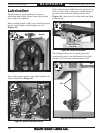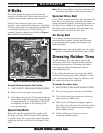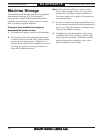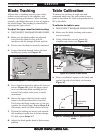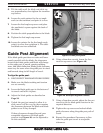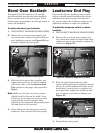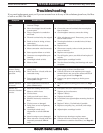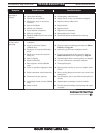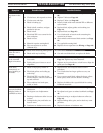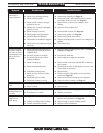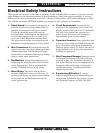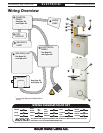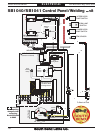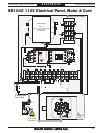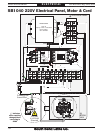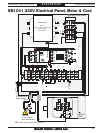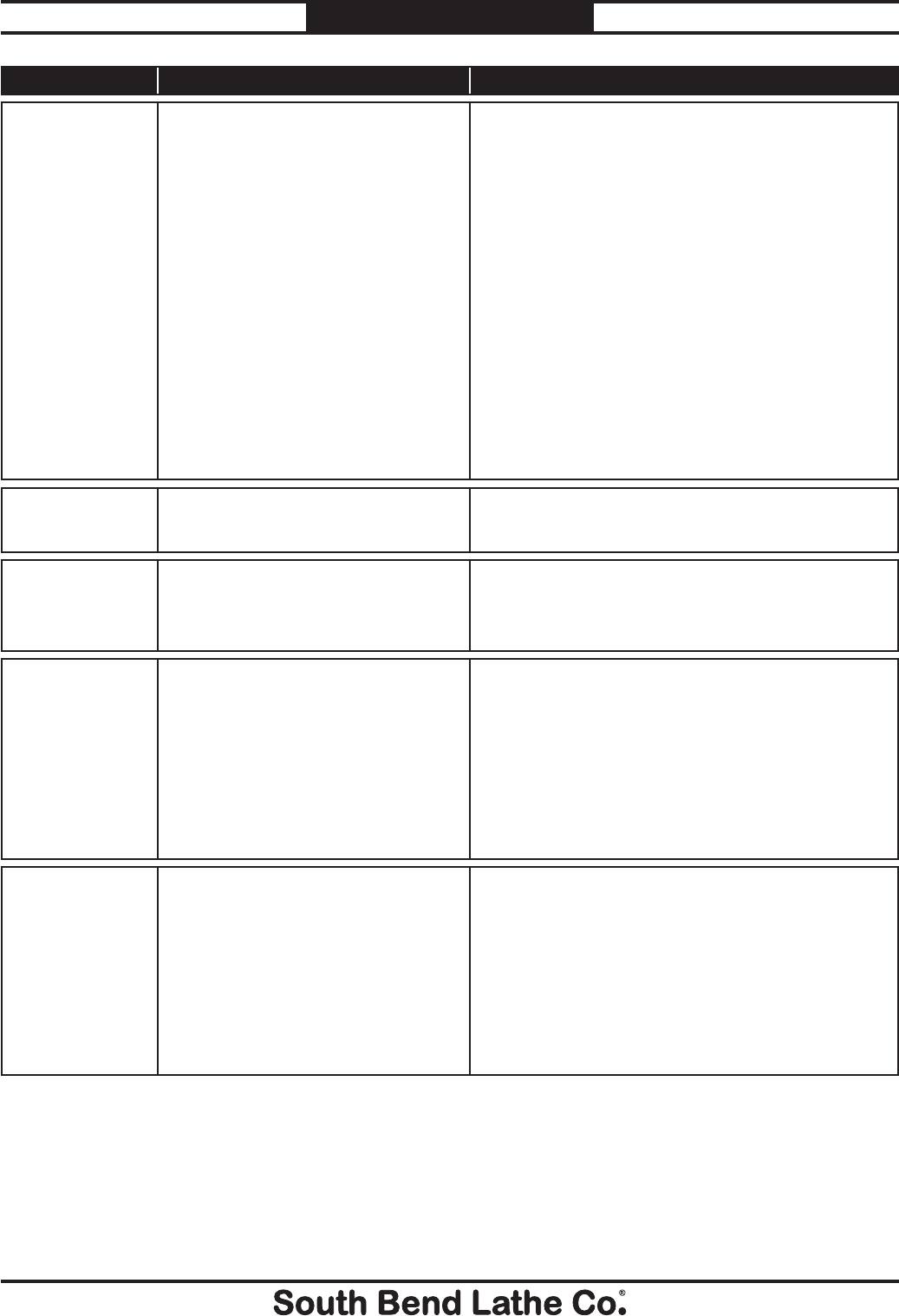
-46-
For Machines Mfg. Since 8/09
Model SB1040/SB1041
TROUBLESHOOTING
Handwheel has
excessive backlash,
endplay, binds, or
is difficult to move.
1.
Leadscrew is dirty or lacks proper
lubrication.
1. Clean and lubricate the leadscrew (see Page 38).
2.
Bevel gears out of adjustment.
2.
Re-adjust bevel gears to reduce backlash (see Page
43).
3.
Bearing or leadscrew collar is worn
or loose.
3.
Replace bearing or readjust leadscrew collar (see
Page 43).
4.
Linkage bolts, pins, and holes are
loose or worn.
4.
Replace linkage bolts, pins, and re-bush any worn
pin holes.
5.
Leadscrew or leadscrew nut worn.
5.
Replace leadscrew or leadscrew nut.
Cuts are not square
or the intended
angle is incorrect.
1.
Pointer or scale not calibrated or
loose table.
1.
Zero table to blade and realign scale pointers (see
Page 41). Tighten any loose fasteners.
2.
Table guide post is loose or out of
alignment.
2.
Tighten any loose hardware or lock levers. Align the
guide post (see Page 42).
Symptom Possible Cause Possible Solution
Machine or blade
bogs down in the
cut.
1.
Excessive load on the blade.
1. Reduce feed rate or increase blade speed (see Page
29).
2.
V-belts loose; belt squeals at times.
2.
Tighten V-belts(see Page 39).
3.
V-belts worn and slips.
3.
Replace V-belts (see Page 39).
4.
Blade is loading up.
4.
Install a blade with more suitable TPI or different
style of teeth.
5.
Blade is dull, wanders, and gets
pinched in the cut.
5.
Replace blade, adjust guides and tracking (see
Page 41).
6.
Blade is dull.
6.
Replace blade (see Page 27).
7.
The blade TPI is too coarse for the
thin workpiece.
7.
Use a blade with at least 2 teeth contacting the
material at all times.
8.
Blade is loose.
8.
Clean wheels and increase blade tension (see Page
27).
9.
Material requires cutting fluid.
9.
Use applicable cutting fluid.
10.
The run capacitor is at fault
(SB1040 only).
10.
Replace the run capacitor (see Wiring on Page 48).
Ticking sound
when the saw is
running.
1.
Blade weld contacting blade guides.
1.
Grind blade weld down smaller.
2.
Blade weld may be failing.
2.
Cut and reweld the blade, or replace the blade.
Blade dulls
prematurely, or
metal sticking to
the blade.
1.
Blade is improperly broken in.
1.
Replace blade, and complete blade break in
procedure.
2.
The blade gullets are loading up
with chips.
2.
Use a blade that has larger gullets to carry out
material.
3.
The blade TPI is too fine for the
thick workpiece, and the teeth load
up and overheat.
3.
Use a coarser-tooth blade, adjust feed rate, adjust
blade speed, make sure the brush is working.
4.
The workpiece has hard spots,
welds, or scale.
4.
Replace the blade with a special blade for cutting
hardened materials.



